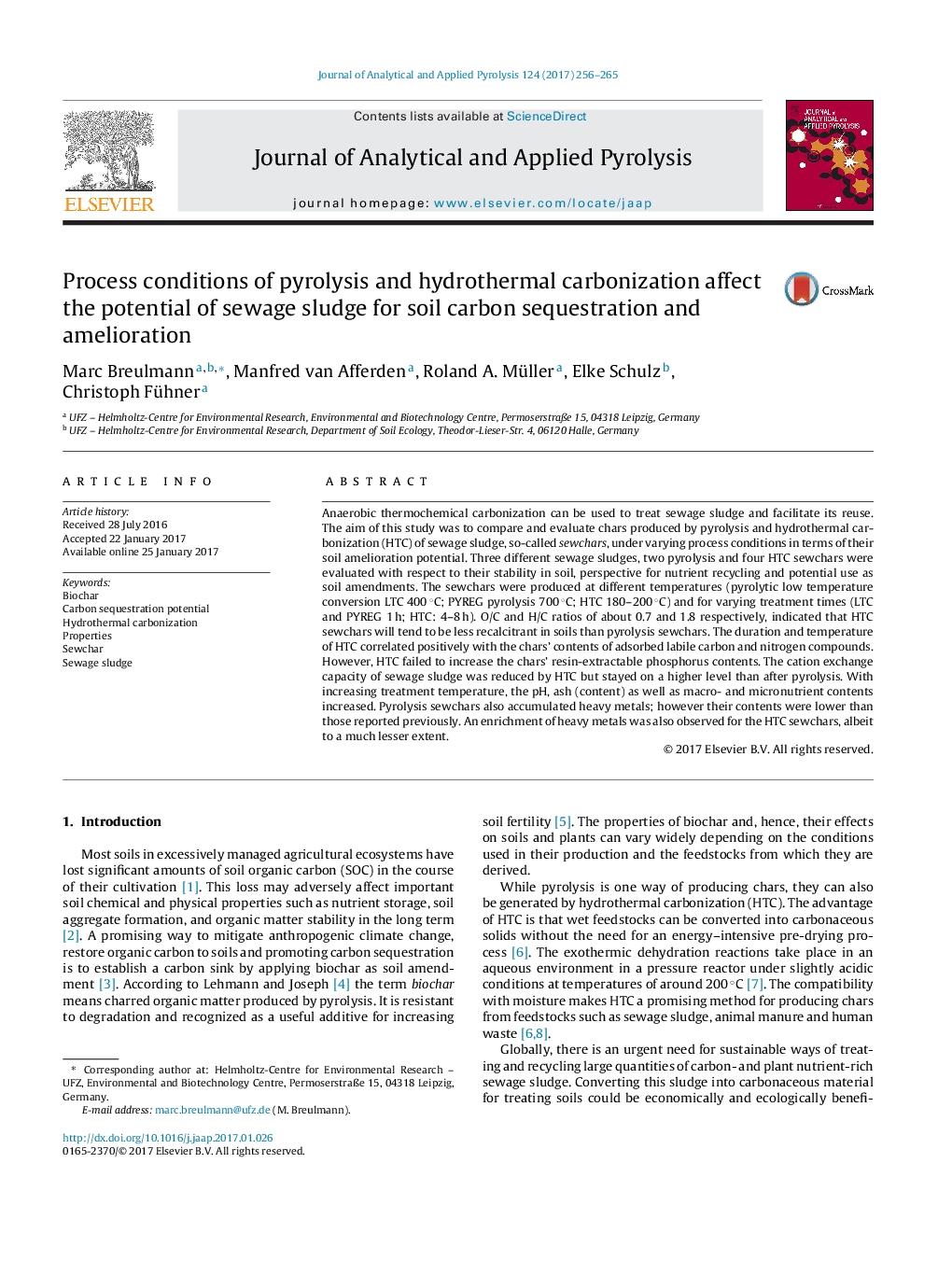| Article ID | Journal | Published Year | Pages | File Type |
|---|---|---|---|---|
| 5134591 | Journal of Analytical and Applied Pyrolysis | 2017 | 10 Pages |
â¢Pyrolysis and hydrothermal carbonization of sewage sludge.â¢Evaluation in terms of their soil C sequestration and amelioration potential.â¢Positive interrelation of adsorbed labile C and N compounds with process parameters.
Anaerobic thermochemical carbonization can be used to treat sewage sludge and facilitate its reuse. The aim of this study was to compare and evaluate chars produced by pyrolysis and hydrothermal carbonization (HTC) of sewage sludge, so-called sewchars, under varying process conditions in terms of their soil amelioration potential. Three different sewage sludges, two pyrolysis and four HTC sewchars were evaluated with respect to their stability in soil, perspective for nutrient recycling and potential use as soil amendments. The sewchars were produced at different temperatures (pyrolytic low temperature conversion LTC 400 °C; PYREG pyrolysis 700 °C; HTC 180-200 °C) and for varying treatment times (LTC and PYREG 1 h; HTC: 4-8 h). O/C and H/C ratios of about 0.7 and 1.8 respectively, indicated that HTC sewchars will tend to be less recalcitrant in soils than pyrolysis sewchars. The duration and temperature of HTC correlated positively with the chars' contents of adsorbed labile carbon and nitrogen compounds. However, HTC failed to increase the chars' resin-extractable phosphorus contents. The cation exchange capacity of sewage sludge was reduced by HTC but stayed on a higher level than after pyrolysis. With increasing treatment temperature, the pH, ash (content) as well as macro- and micronutrient contents increased. Pyrolysis sewchars also accumulated heavy metals; however their contents were lower than those reported previously. An enrichment of heavy metals was also observed for the HTC sewchars, albeit to a much lesser extent.
